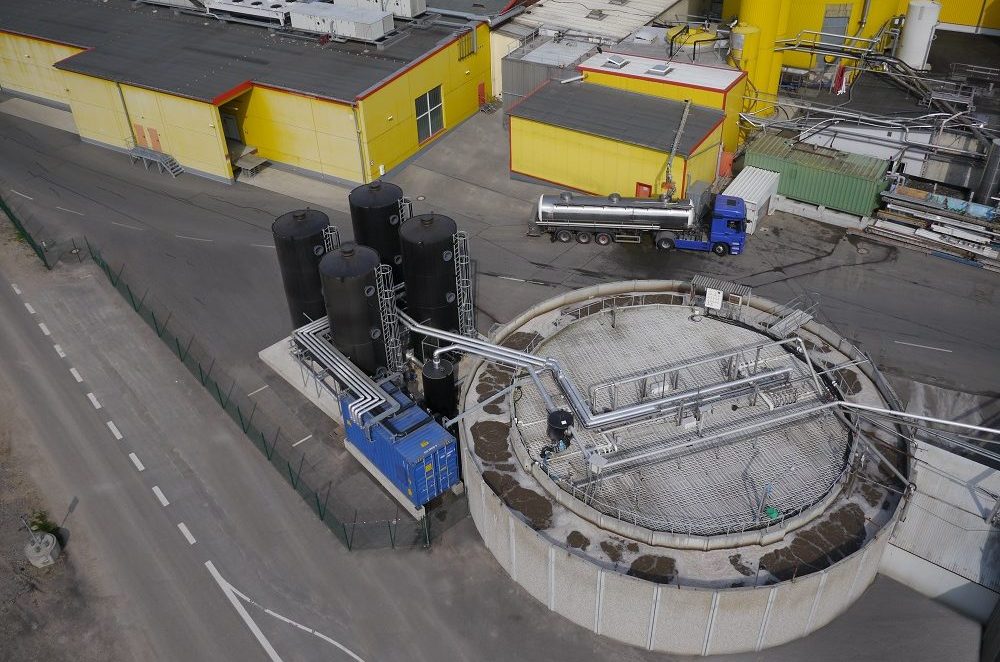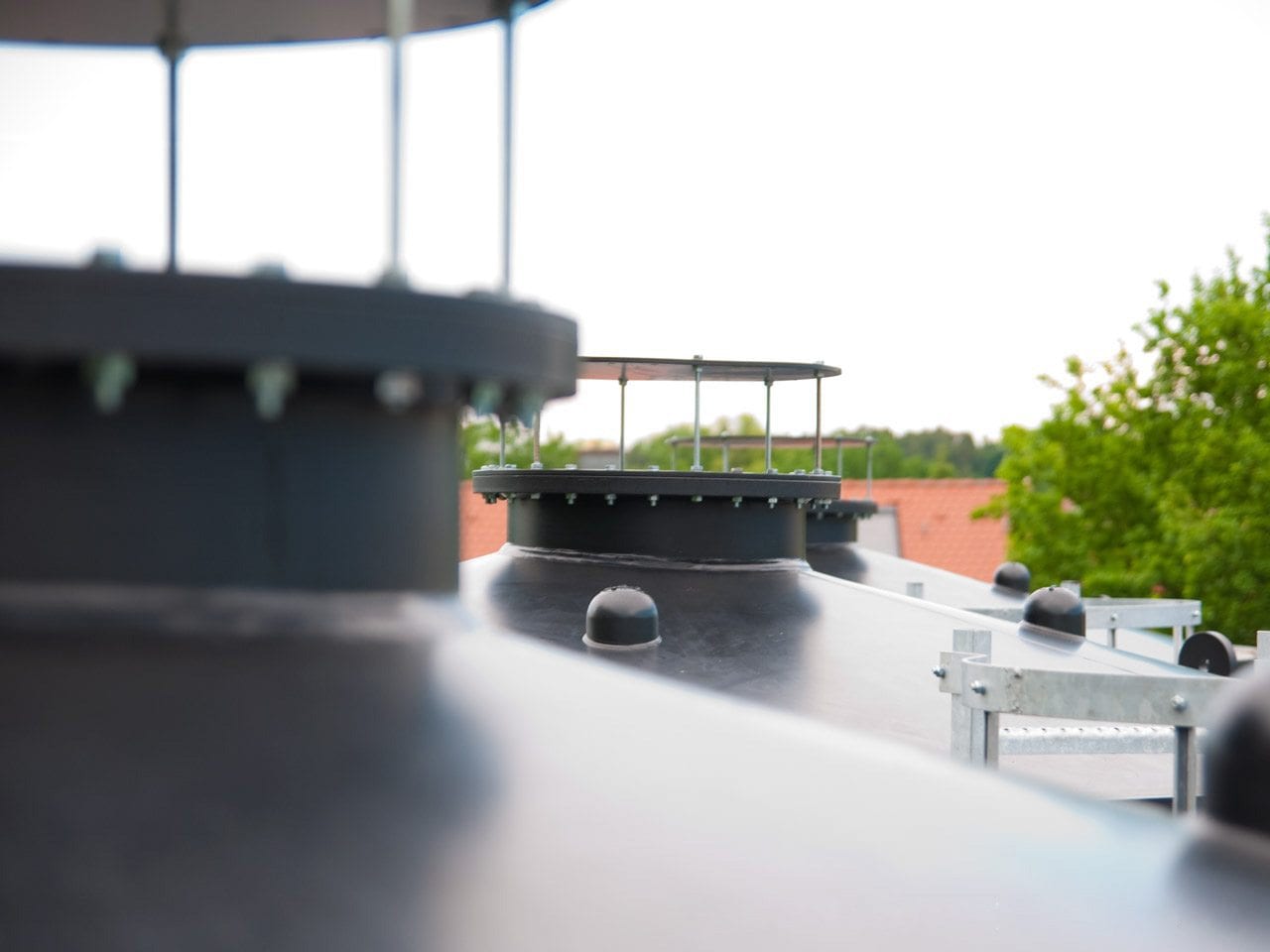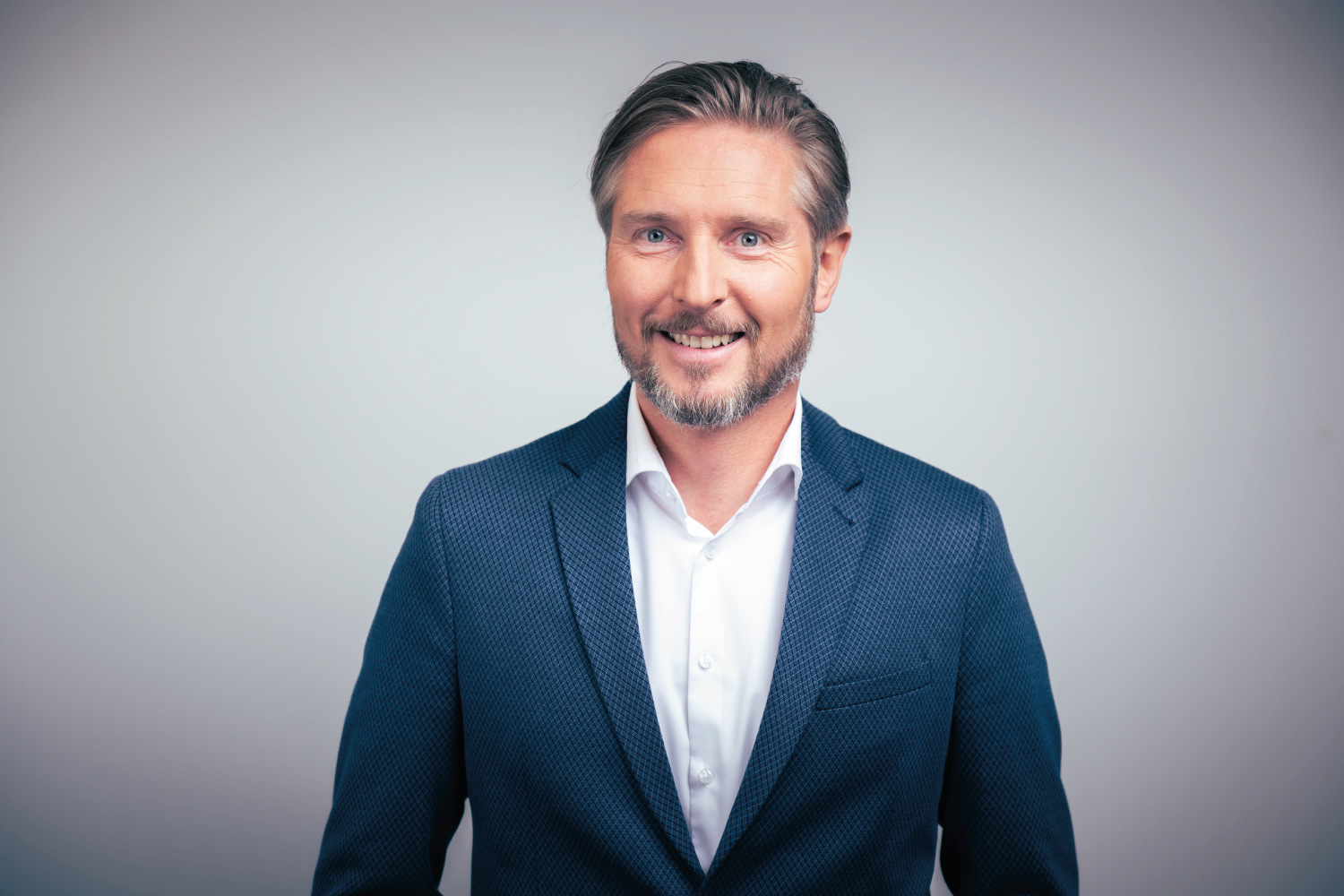Space-saving Wastewater Treatment in the Potato Industry
The extension of wastewater treatment at Friweika should be space-saving, fast and without underground construction. By using a biological process, all goals could be achieved.
Extending the Aerobic Biological Wastewater Treatment Plant
When production surges, proper cleaning of the ever-increasing amounts of wastewater must be maintained according to regulations. Specialists of the Dresden (Germany) based DAS Environmental Expert GmbH (DAS EE) have mastered the necessary expansion of the aerobic biological wastewater treatment innovatively with minimum spacial requirements.


Increasing Load for the Aerobic Biological Wastewater Treatment
For Friweika, potato processing and marketing are basically booming all year round. Since its commissioning 10 years ago the aerobic biological stage of wastewater treatment has been expanded several times. The old system was originally designed to handle COD loads of 560 kg/d, and was filled far beyond its capacity with loads at times reaching 1260 kg/d. A new plant would have required a second round, 22 meters in diameter and a 6 meters high combination tank, for which the company simply did not have the space.

Modernization of the Wastewater Treatment Plant Instead of New Building
Instead of a new building DAS EE specialists suggested to simply extend the old system by adding 4 reactors of the type TFR industrial, each 3 meters in diameter and 8 meters high. Extensive pilot trials convinced Friweika of the system’s treatment capacity, which is why in the end the company chose DAS technology.
DAS technology offers several advantages at once. One is the system’s aforementioned small footprint. The reactors contain a lightweight carrier material with a highly specific surface. Microorganisms growing a biofilm on the carrier material cause the aerobic degradation, thus taking advantage of the high capacity in wastewater treatment that the biofilm process is known for.
The reactor, operating by the counter current principle: The wastewater trickles down as a liquid film. Ventilators push air in the opposite direction creating highly effective substance exchange conditions ensuring the continuous supply of oxygen necessary for the microorganisms in the biofilm as they perform the aerobic degradation.
In classic activated sludge tanks, the microorganism’s supply of oxygen is achieved by aerating deep tanks from the bottom against a water column of 8 m or higher. Pressure loss against the carrier material on the other hand is merely 30 cm (300 mbar). Thus, the TFR reactor needs significantly less energy for oxygen supply – an additional advantage of the DAS technology.
TFR technology is based on the ‘philosophy of modular design’ and can quickly and easily be extended by adding additional reactors without requiring work-intensive construction.
Reliable and Effective Wastewater Treatment
Due to the integration of a TFR-reactor into the plant concept, a reduction of spacial requirements by nearly 50 % were achieve compared to a classic system. The new concept convinced the plant operators at Friweika. Construction and commissioning of the new system happened without significant interruptions in the operation of the pre-existing treatment plant.
At Friweika, the 4 TFR reactors have been operating since August 08, 2012. The wastewater stream is separated into two parts with one being treated by the old system and the other one in the TFR reactors. Part of the wastewater treated by the old system is used to re-fill the TFR reactors after removing excess biofilm, which becomes necessary from time to time. Together the two systems have a treatment power that has not yet reached its capacity even during production expansions, as the past couple of months have explicitly revealed. At design-conform operation the wastewater with inflow COD loads of about 3,500 mg/l (85 % percentile) was cleaned to indirect discharger quality with TFR reactor outlets containing less than 1,000 mg/l COD.

Your contact person for all questions on wastewater treatment
